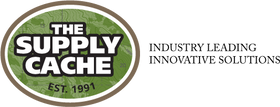
As a wildland firefighter, communication is extremely important. Without it, safely navigating emergency situations and effectively implementing wildfire mitigation strategies is extremely challenging, if not impossible. In order to maintain clear and efficient communication between those in one’s team, it’s crucial to be familiar with wildland fire terminology.
Below, we have provided a glossary of wildland fire terminology to help you brush up on common terms used by the National Wildfire Coordinating Group (NWCG) and its various subgroups.
- Advancing Fire: also known as a forward fire or run, an advancing fire refers to the portion of a fire that spreads rapidly with high intensity.
- Burn Out: a fire located inside of a control line that is set for the purpose of consuming fuel between the edge of the fire and the control line.
- Cache: Tools, equipment, and supplies available for use in an incident and are stored in a designated location.
- Dispatch Center: an organization that orders, mobilizes, demobilizes, or assigns resources to an incident. To do so, the dispatch center processes requests, tracks resources, and coordinates responses.
- Entrapment: a situation where personnel become caught in a life-threatening position due to fire-related barriers that block escape routes and compromise safety zones. In such a case, the deployment of a fire shelter may be necessary.
- Prescribed Fire: a prescribed fire is a type of planned wildland fire purposefully ignited in order to achieve certain objectives, such as prairie restoration or forest management. Such fires are always ignited in accordance with all applicable laws, policies, and regulations.
- Mop Up: a mop up is the process of extinguishing or removing burning material near certain areas such as control lines, trenching logs, or felling snags. This process is completed in an effort to make a fire safer, reduce residual smoke, or prevent rolling in an area after it has burned.
- Reburn: the repeat burning of an area that ignites leftover fuel in a location fire has already passed over.
- Safety Zone: a relatively large area that has been cleared of flammable materials and is used to provide a safe escape in the event the line is outflanked or spot fires cause the control line to become unsafe. The safety zone may also be used as a part of fuel breaks.
While there are many terms used in the field of wildland firefighting other than the ones included on this list, we hope our short glossary of wildland fire terminology provides you with a solid introduction into wildland fire terminology.
The Supply Cache is a leading fire supply store for wildland firefighters. For high quality equipment that will help keep you and your team safe while out on the fire line, shop our extensive inventory of products today.
